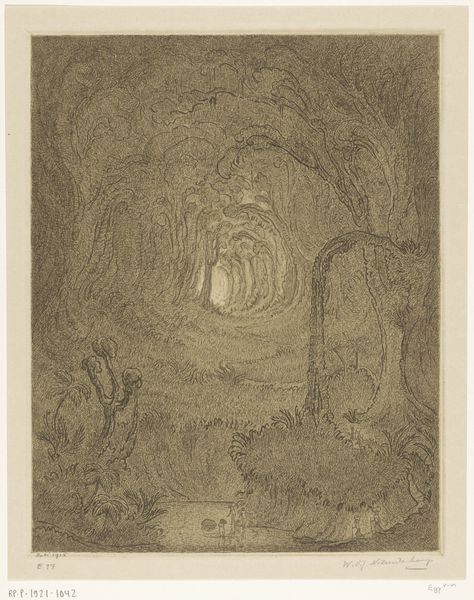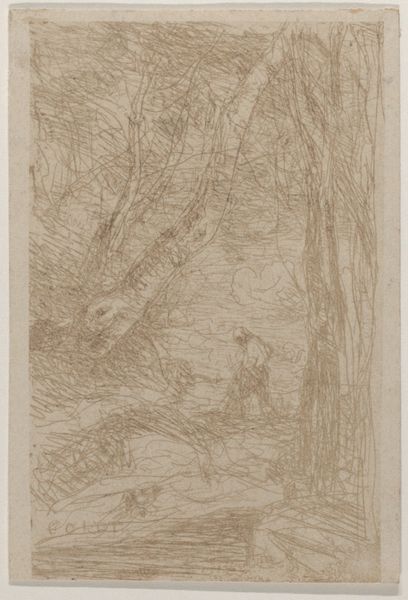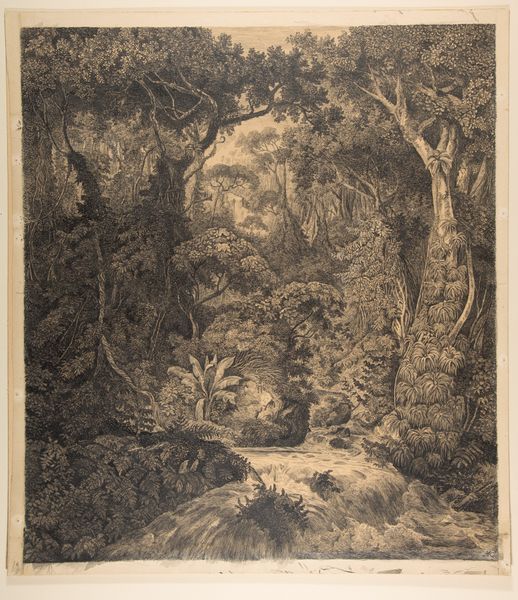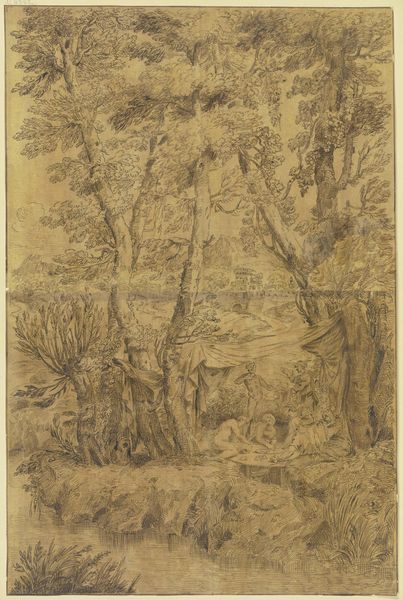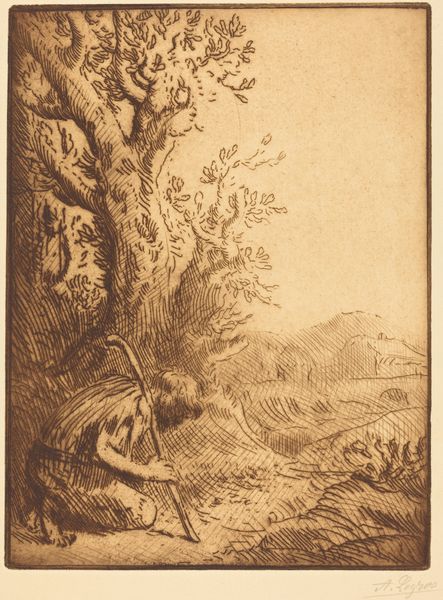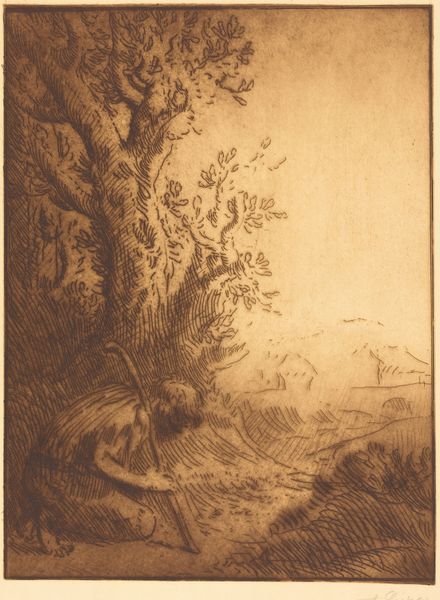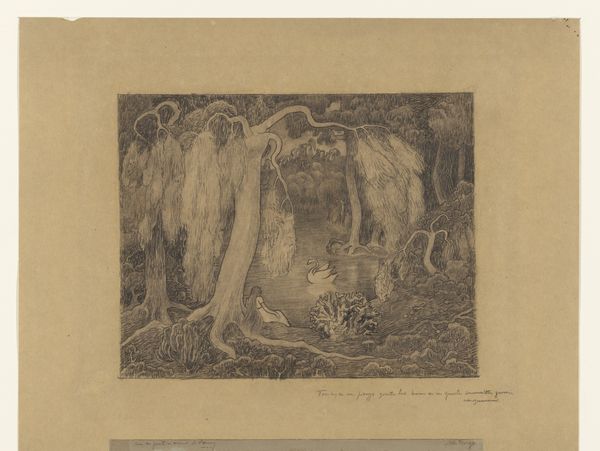
drawing, pencil
#
drawing
#
pencil sketch
#
landscape
#
etching
#
pencil
#
orientalism
#
realism
Dimensions: height 298 mm, width 235 mm
Copyright: Rijks Museum: Open Domain
Editor: This drawing, "Oerwoud op Java" or "Jungle in Java," created by Wijnand Otto Jan Nieuwenkamp between 1907 and 1912, is strikingly intricate despite being a simple pencil drawing. It feels almost dreamlike; what immediately stands out to me is this sense of depth created with just line work. What do you see in this piece? Curator: Indeed, the line work creates a potent atmosphere, one thick with symbolic weight. Notice how the trees are almost anthropomorphic, like silent guardians, and the light beckoning from within the jungle is reminiscent of the illumination sought during a rite of passage. Consider the artist's choice of depicting Java – a land steeped in spiritual and cultural heritage. Doesn't the sketch evoke a cultural memory, a continuity between the land and its myths? Editor: I do see what you mean. The trees do have a sort of sentience. But why Java specifically? What’s the significance there? Curator: Java has been a crucible of cultural exchange for centuries. Nieuwenkamp's choice may stem from a fascination with the "exotic," prevalent at the time, yes. However, it's likely deeper. Consider that jungles often represent the subconscious, the untamed. In choosing Java, he potentially taps into a collective yearning, associating it with primordial knowledge and spiritual awakening. Editor: That’s fascinating, looking at it as less of an Orientalist gaze and more of an exploration of universal yearning represented by a specific place. I guess I didn’t think of it that way at first! Curator: Precisely. And visual symbols have this ability to hold multiple meanings. Looking closer always brings about fresh insights, new interpretations, don't you agree? Editor: Definitely! I'll never look at landscape drawings the same way again.
Comments
No comments
Be the first to comment and join the conversation on the ultimate creative platform.
